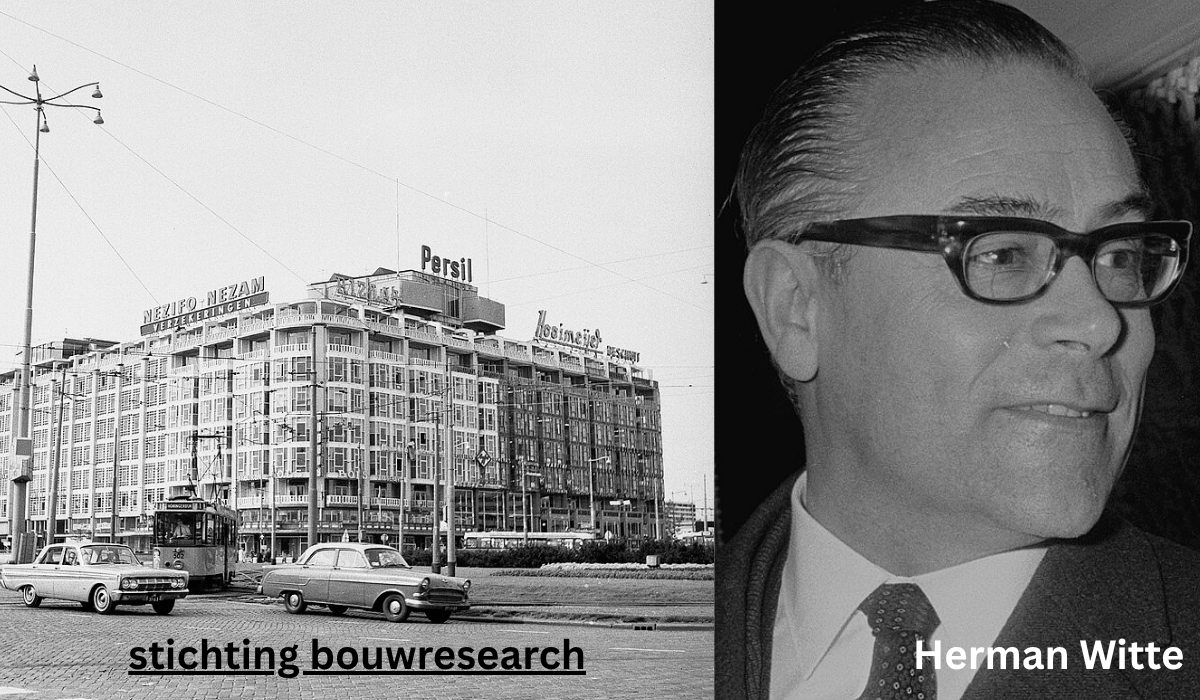Founded in 1959 as the Netherlands’ premier bouwonderzoeksinstituut (construction research institute), Stichting Bouwresearch (SBR) pioneered technische innovaties (technical innovations) from its strategic base at TU Delft’s Bouwcampus (Construction Campus). Under inaugural chairman Herman Witte — a former Dutch minister — and later director Jeannette Baljeu, its team of ~50 bouwkundig specialisten (~50 architectural specialists) engineered transformative advances in:
- Nationale bouwregelgeving (national building codes)
- Energieprestatiegebouwen (building energy performance)
- Milieugerichte bouwnormen (environmental construction standards)
As the kenniscentrum (knowledge hub) for duurzaam bouwen (sustainable construction), SBR’s research directly shaped tools like Eco-Quantum (lifecycle assessment) and the Nationaal Pakket Duurzaam Bouwen. Though merged into SBRCURnet in 2017, its legacy persists through:
Bouwinnovatie (construction innovation) methodologies.
Energiezuinige ontwerpprincipes (energy-efficient design principles).
Nederlandse standaardisatie (Dutch standardization) frameworks.
This article analyzes SBR’s 58-jarige missie (58-year mission) to redefine verantwoord bouwen (responsible building) in Europe.
SBR’s Foundational Role in Dutch Construction
Stichting Bouwresearch emerged as a pivotal entity coordinating applied research across academia, industry, and government. Its outputs—like the Nationaal Pakket Duurzaam Bouwen (National Package for Sustainable Building)—established frameworks for milieuprestatie gebouwen (environmental building performance) 9. Key functions include:
- Knowledge Synthesis: Publishing technical guidelines (e.g., Report No. 26 on non-traditional housing methods) to standardize niet-traditionele woningbouw 5.
- Cross-Sector Collaboration: Partnering with bodies like CROW (standards) and TNO Bouw (applied science) to validate research.
- Policy Foundations: Informing Dutch building codes like Bepalingsmethode Energieprestatie (energy performance calculation methods) 9.
Sustainable Construction: SBR’s Pioneering Legacy
SBR’s research directly enabled the Netherlands’ leadership in eco-conscious building. Its 1996–1997 Nationaal Pakket defined priorities for reducing dwellings’ environmental impact, emphasizing:
- Materiaalstroomanalyse (Material flow analysis) for resource efficiency 9.
- Energiezuinige ontwerpprincipes (Energy-efficient design principles), later integrated into tools like Eco-Quantum (lifecycle assessment software) 9.
- Waterverbruik reductie (Water consumption reduction) in residential projects.
These efforts aligned with global goals like the Factor 20 initiative—an 80-95% ecological impact reduction target by 2040 9.
Core Research Domains & Methodologies
SBR’s publications reveal a multidisciplinary approach:
A. Building Physics & Materials Innovation
- Studying thermische schiloptimalisatie (thermal envelope optimization) and circulaire bouwmaterialen (circular construction materials).
- Developing milieugerichte levenscyclusanalyse (environmental lifecycle analysis) frameworks 9.
B. Construction Process Modernization
- Documenting prefabricagetechnieken (prefabrication techniques) and renovatiestrategieën (renovation strategies) for efficiency.
- Report No. 26 (Niet-traditionele Woningbouwmethoden) cataloged experimental techniques beyond conventional brick-and-mortar 5.
C. Performance Benchmarking
- Creating milieuprioriteringssystemen (environmental prioritization systems) to identify high-impact areas like energy use (50–80% of a dwelling’s footprint) 9.
Institutional Network & Knowledge Transfer
SBR’s influence extended via strategic alliances:
- Bouwend Nederland: Implementing SBR’s guidelines in contractor practices.
- SEV Rotterdam: Co-developing the Handleiding Duurzame Woningbouw (Sustainable Housing Manual) 9.
- Ministerie BZK: Translating research into national policies like bouwregelgeving harmonisatie (building regulation harmonization).
Knowledge dissemination occurred through:
- SBR Publicatiereeksen (Publication series) for specialists.
- Bouwonderzoekssymposia (Construction research symposia) for industry stakeholders.
Modern Relevance & Future Trajectories
Though SBR later evolved into SBRCURnet (merging with CUR for infrastructure), its legacy persists:
- Digital Transition: AI-driven bouwprestatievoorspelling (building performance prediction) builds on SBR’s data legacy.
- Climate Resilience: Klimaatadaptief bouwen (climate-adaptive construction) guidelines stem from early flood-risk studies.
- EU Standards Alignment: Dutch EPBD-implementatie (Energy Performance of Buildings Directive compliance) reflects SBR’s foundational work 9.
Strategic Insight: For today’s architects/developers, SBR’s research underscores that integrale duurzaamheid (holistic sustainability) requires data-driven material, energy, and water stewardship—not just carbon metrics.
Conclusion:
Stichting Bouwresearch transformed intuitive building practices into evidence-based science. Bouwinnovatie, duurzaamheidsprestaties, and Nederlandse bouwnormen represent a 50-year mission to build smarter. As the industry faces net-zero deadlines, revisiting SBR’s rigorous, collaborative model offers a path forward.
Journalist
Jess Klintan, Editor in Chief and writer here on Sportsrater.co.uk Email: sportsrater5@gmail.com, Follow her on Facebook , Instagram

